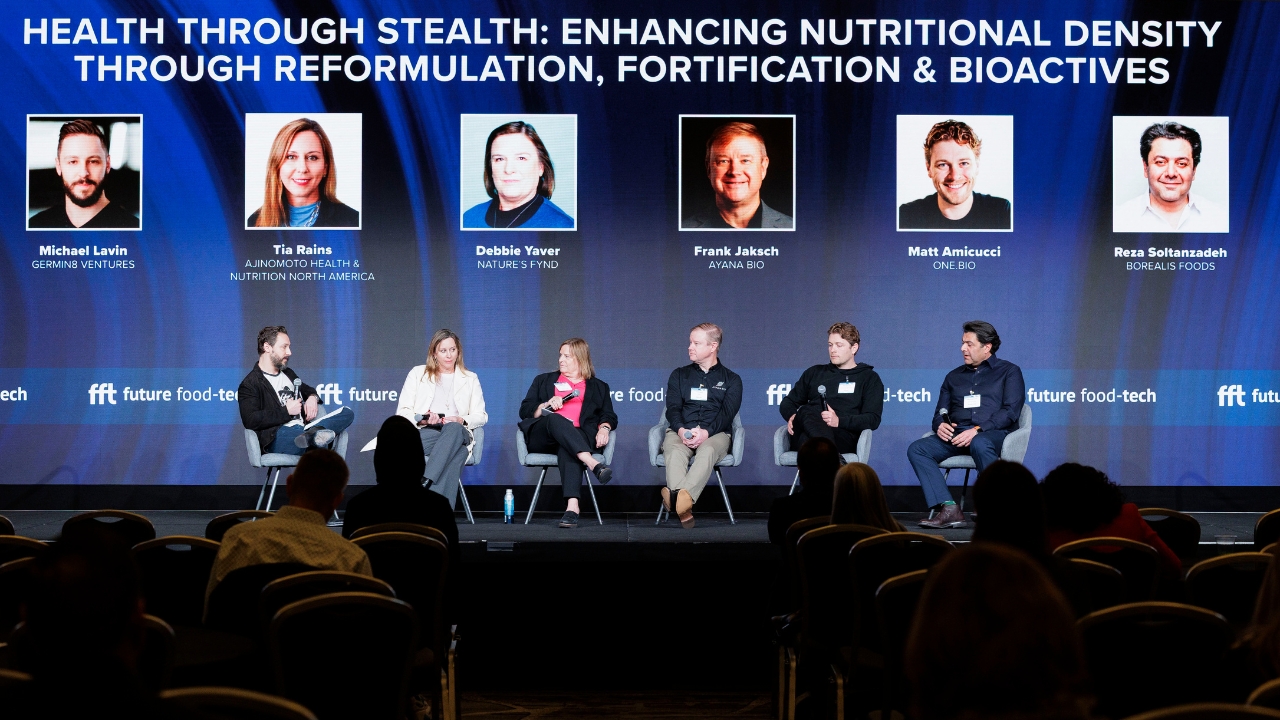
What’s Next in Food & Ingredient Innovation? Key Takeaways from Future Food-Tech 2025
The Future Food-Tech summit in San Francisco (March 13-14) brought together industry leaders, entrepreneurs, and researchers to discuss the future of food innovation. While many of the conversations reinforced known trends—such as the demand for more sustainable food systems, ingredient innovation, and the power of AI to accelerate R&D—this year’s event surfaced new insights and industry shifts that received some attention. Here are some of the most compelling themes that stood out:
Supply Chain Insecurity & the Need for Cost-Neutral Innovation
Supply chain instability remains a pressing issue, and while companies are open to new ingredient innovation, cost remains a critical barrier:
- Cost-neutral innovation is a requirement. Several panels reiterated that new sustainable ingredients must match the price of existing options.
- Precision fermentation is an established alternative ingredient mode of production, often highlighted alongside enzymatic conversion and CO2-based protein production.
- Plant cell culture from companies such as Ayana Bio is gaining traction as an alternative to adding nutrient density back to food. Plant cell culture brings ingredient innovation by delivering a more complete spectrum of phytonutrients, as found in nature.
- Companies are beginning to think beyond incremental improvements—entirely new food categories that are positioned as “better for you” (e.g., algae oil) have a stronger ability to command a premium price.
- Strategic partnerships are key. Danone, for example, supports farmers by paying a premium for dairy while also investing in fermentation startups to expand production capabilities.
- Influencers and “uncommon collaborations” can drive adoption. Checkerspot leveraged a celebrity chef to introduce its algae cooking oil, demonstrating how storytelling and perceived value can help emerging technologies succeed.
Rethinking UPFs: Reformulation for Health & Trust
While ultra-processed foods (UPFs) are considered a necessity to feed the expanding population, it is under scrutiny and reformulation efforts are gaining traction:
- Removing artificial dyes and preservatives is back on the agenda, though previous attempts failed due to consumer resistance.
- Food is deeply emotional and cultural, making reformulation efforts particularly challenging in categories like plant-based dairy and meat.
- Four key factors drive new product development (NPD): Nutrition/Health, Taste, Texture, and Cost. Any new product must excel in all four to succeed.
The Regulatory Landscape: Rapid Shifts and New Oversight
The uncertainty surrounding regulatory policies, particularly the Generally Recognized as Safe (GRAS) process, was a major discussion point. With the new administration’s stance on food and health (Make America Healthy Again, or MAHA), there was some anxiety about potential disruptions:
- The industry is grappling with more than just uncertainty—there is a sense of “volatility” that could create continuous change.
- A significant proposed change is the potential elimination of the self-affirmed GRAS pathway, a move that could drastically alter how food ingredients gain market approval.
- The FDA may require full safety data submissions for all new food ingredients, increasing transparency but also adding time and cost to product development.
- While this change aims to rebuild consumer trust and ensure ingredient safety, it presents new regulatory hurdles that could slow ingredient innovation, particularly for start-ups without the resources and financial runway to navigate an extended approval process.
- Consumer sentiment, amplified by platforms like TikTok, is playing a role in shaping industry decisions, often in ways that challenge scientific consensus.
The GLP-1 Effect & the Future of Nutrient-Dense Foods
The rise of GLP-1 drugs for weight loss (e.g., Ozempic) is forcing the food industry to rethink product development:
- Consumers on these drugs are eating less, meaning that foods must be more nutrient-dense to support health with a lower calorie consumption.
- While ultra-processed foods (UPFs) often take the blame for poor health outcomes, lack of fiber, overall diet, and exercise are just as important.
- Despite consumer focus on protein, fiber deficiency is a real issue—a messaging challenge the industry needs to address.
The Gut Microbiome: Continues to be the Next Big Frontier
The gut microbiome continues to be a hot topic, with significant investments in research, ingredient innovation, and technology:
- Microbiome modulation is gaining traction, with a growing focus on how food interacts with gut health.
- Innovative diagnostics are emerging, such as Nimble Science’s ingestible device that collects samples from the small intestine to analyze metabolite production.
- There is increasing discussion about the link between food and mental health, an area poised for more exploration in the coming years.
AI is Changing the Pace of Ingredient Innovation
One of the most consistent themes across panels was the transformational role of AI in food innovation:
- AI is accelerating R&D by optimizing ingredient discovery and formulation at an unprecedented pace.
- Companies leveraging AI are seeing faster time-to-market and more precise product development based on consumer preferences and scientific insights.
Looking Ahead
The food industry is at an inflection point, driven by regulatory shifts, consumer expectations, and the rapid advancement of technology. The sentiment at Future Food Tech 2025 was clear: companies that embrace food innovation—while keeping cost, transparency, and consumer perception at the forefront—will be best positioned to navigate the changes ahead. Whether through precision fermentation, plant cell culture, microbiome-focused foods, or AI-driven product development, the future of food and sustainable ingredients is evolving faster than ever.
 BACK
BACK